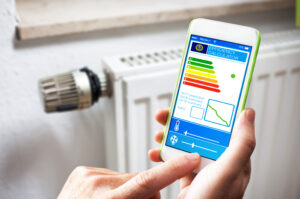In 2023, technology has become a cornerstone of nearly every aspect of our lives, including the buildings in which we live and work, which brings us to the smart building solution.
It has emerged as one of the most exciting new technologies in recent years, promising a host of benefits for building owners, occupants, and the environment as a whole.
But with any new technology, the question arises: is it really worth it?
In this blog, we will explore the many benefits of a smart building solution and examine whether the investment is truly worth it for all key stakeholders.
So, is a smart building solution really worth it?

Here are some of the main benefits
Reduced costs:
Did you know one-third of global energy is consumed in residential, public, and commercial buildings?
According to another study, buildings use about:
- 40% of global energy
- 40% of global resources,
- 25% of global water,
- and they emit approximately 1/3 of GHG emissions.
So, a smart building solution helps reduce energy consumption by automating the HVAC system and lighting, resulting in significant cost savings.
Plus, by using real-time data, you can optimize resource utilization and reduce wastage.
Increase employee productivity:
Smart buildings can create a more comfortable environment for employees, resulting in increased productivity.
A smart building solution can create a more comfortable and productive environment for employees.
IoT sensors can monitor and adjust the temperature, lighting, and air quality in real-time, creating an optimal work environment.
This means employees can focus better on their work, increasing productivity.
Additionally, a smart building can offer advanced security measures, ensuring employees feel safe and secure in their workplace.
Minimize energy consumption:
With a smart building solution, you can reduce your carbon footprint by minimizing energy consumption.
By automating the HVAC system and lighting alone, a smart building can save 23% of the energy that is used.
Different studies prove that you can really save by leveraging IoT and BMS for energy efficiency.
Simply by using:
- Daylight Sensors
- HVAC Controllers
- HVAC Economizer Controls
- Lighting Controls
- Occupancy Sensors
- Smart Meters
- Smart Thermostats
- Variable Speed Drives, etc.
Improve the health and wellbeing of tenants/employees:
Tenants’ wellbeing should be at the top of the priority list for landlords.
(It probably isn’t, but it should be)
Smart buildings result in strong returns and satisfied tenants.
So, through the use of smart sensors, a smart building can monitor and regulate air quality, temperature, and humidity levels (we already covered that.)
This can lead to better indoor air quality and a more comfortable working environment, reducing the risk of respiratory and other health problems.
In addition, smart buildings can use automated lighting systems that mimic natural light patterns, which can positively impact employees’ circadian rhythms.
Research has shown that exposure to natural light can improve mood, sleep quality, and overall wellbeing.
Maximise utilization of your entire space:
Using IoT sensors and advanced analytics, building owners and managers can understand how their space is being used and make informed decisions to optimize it.
For example… if a building area is consistently underutilized, it can be repurposed for another use.
Similarly, if specific areas are frequently overcrowded, measures can be taken to redistribute the flow of people or adjust the layout of the space.
This not only improves the efficiency of the building (more savings for you) but also enhances the overall user experience (a win-win situation.)
By maximizing the utilization of your space, you can ensure that EVERY INCH of your building is being used.
Immediately identify and fix faulty equipment:
A smart building solution can alert when there is a performance reduction or any machinery issues.
This prevents faulty equipment, as problems can be identified and fixed before machinery malfunctions.
Do you know what this means?
- increased equipment reliability,
- reduced downtime,
- increased cost savings. -> to name a few!
Enhance decision-making through real-time, accurate data:
The whole blog comes to this…
Smart sensors collect real-time data and even have decision-making functions, optimizing business operations and performance.
Translation: With real-time data, you can identify any issue, analyze any trend, and optimize resource utilization.
To wrap it up!
Implementing a smart building solution brings a host of benefits to ALL key stakeholders… from building owners to tenants and employees.
The short and long-term benefits, as well as the returns on investment, are undeniable.
As we continue to advance in technology, the future of smart buildings is bright and promising.

